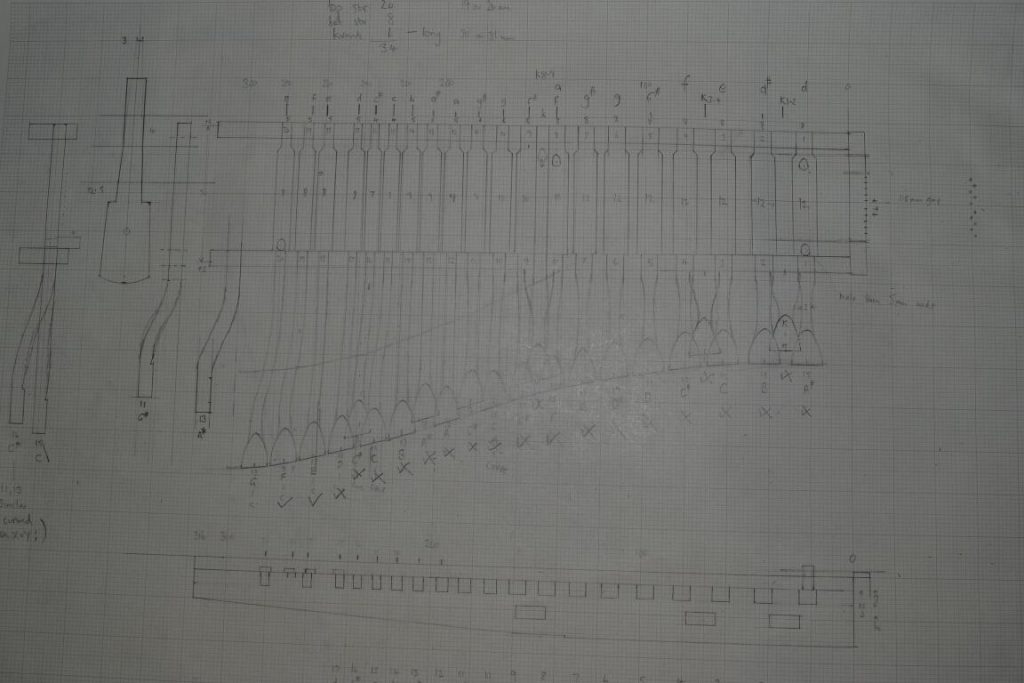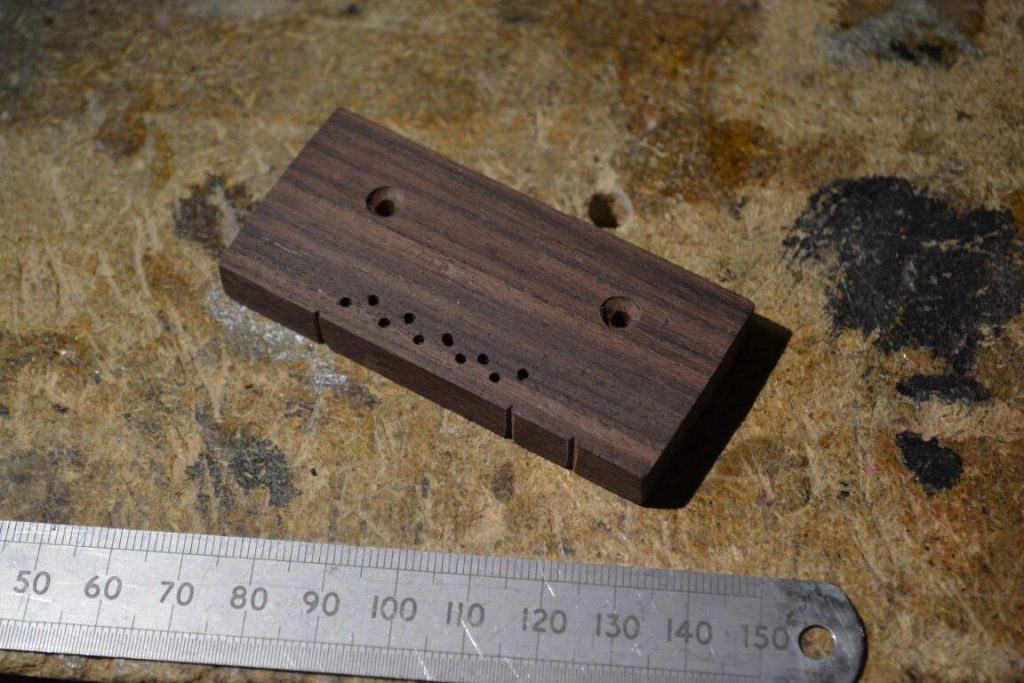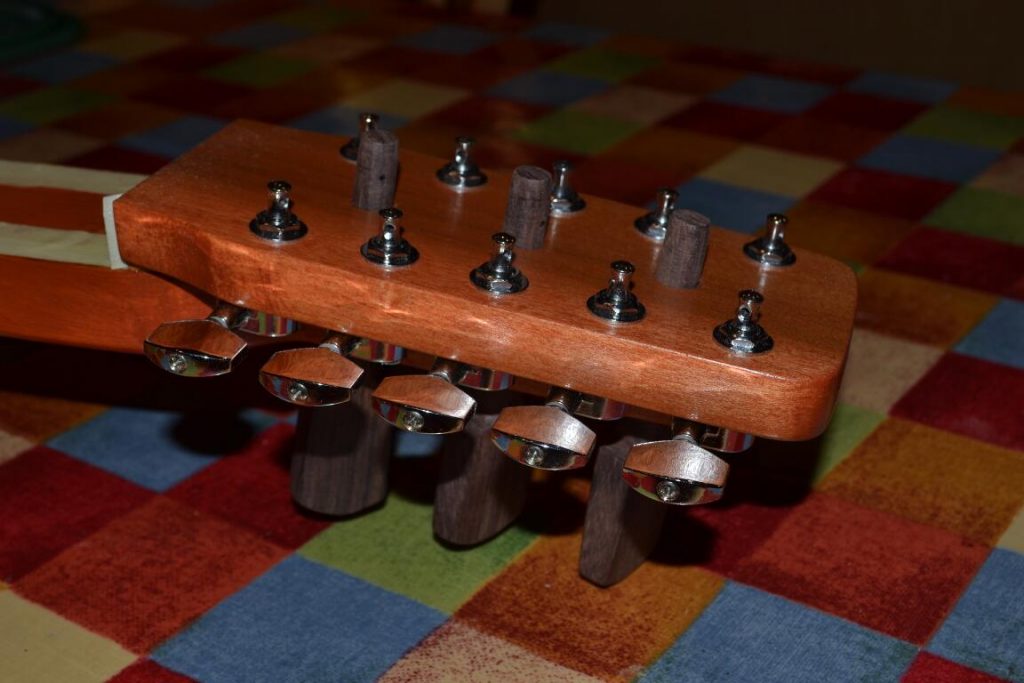Making the keys is the last complicated job for the kontrabas, simply because they are all slightly different, and some of them are curved in two dimensions! I had not drawn the exact details of the keys on the original design, so now had to complete that before I started to cut wood.
Month: January 2017
The nut
The nut on a stringed instrument like the nyckelharpa is the piece of wood (or sometimes plastic) over which the strings go on the neck of the instrument. Since it forms part of the system that sets the instrument tuning, and holds one end of the vibrating length of the string firmly to the instrument, it must be stable and solid. I used some dark, dense wood from my recycled piano collection – probably rosewood. It’s the same stuff the tuning pegs are made from.
You can see that I have arranged to screw the nut to the neck; this is so that I can exchange it for a better one, should I decide that I could improve on this first version. The playing strings are taken over the top of the nut (in the grooves); the sympathetic strings are taken through holes, as in the old kontrabas instruments.
The Moon and Venus
Machine heads
When I first started the drawings I had decided how I wanted to tune the sympathetic strings. I wanted a system which allows them to be tuned very easily, with no binding of the strings on any of the instrument structure. I am not aiming for “authenticity” – I want a functional kontrabas nyckelharpa, easy to tune and play. The machine heads are the individual type usually found on electric guitars; they fit into a single round hole, with an additional locating screw underneath to hold the mechanism in place.
The main tuning pegs for the playing strings are traditional – because I can use adjusters on the tailpiece.
Black Bun
Well I have lived in Scotland for over 40 years, but I had never tried this Hogmanay delicacy until last night! It’s “Black Bun” – and for a Wiganer, it’s basically a pie with a cross between Christmas Cake and Christmas Pudding inside it. Yes, definitely a pie – it’s actually quite edible.






